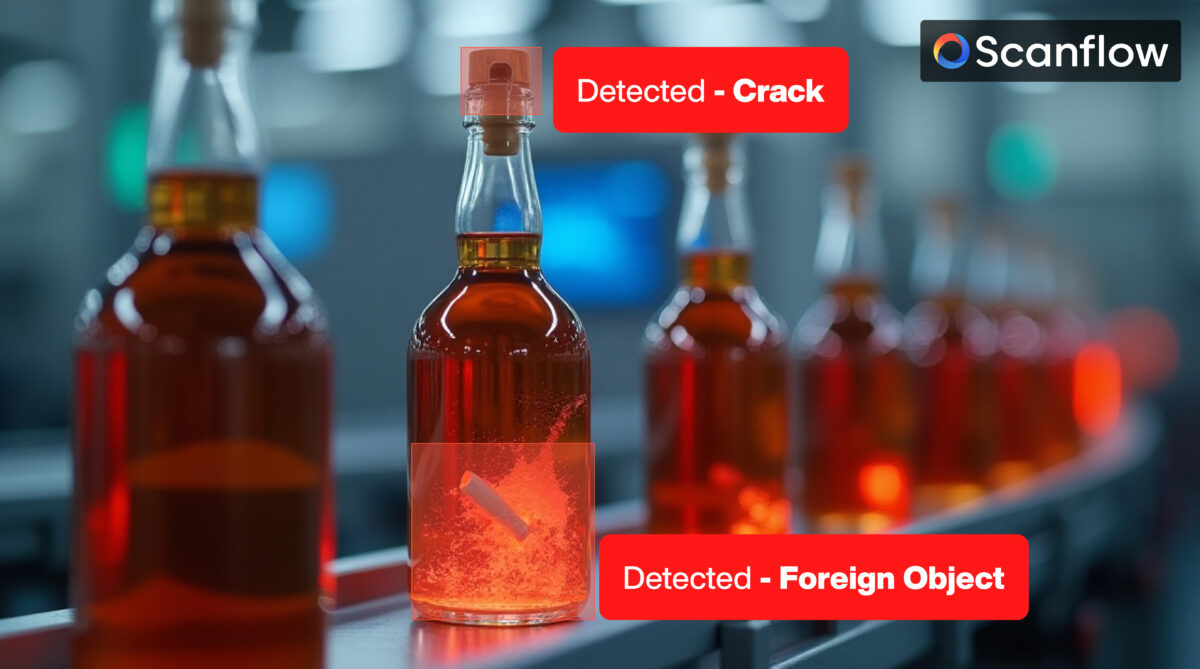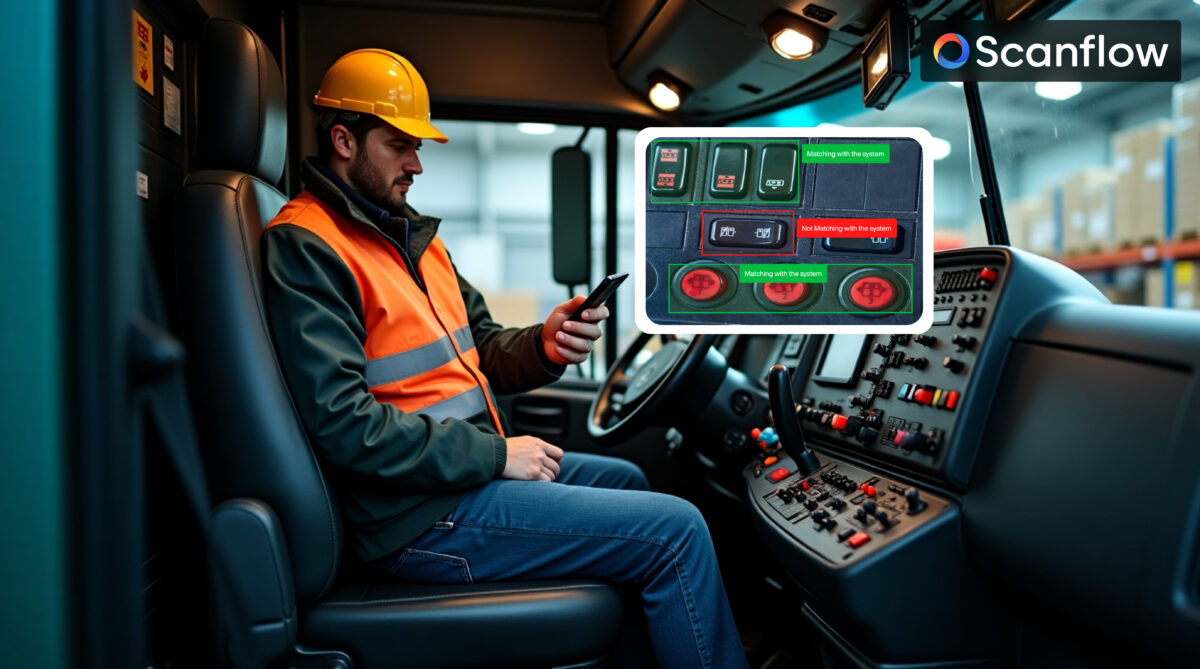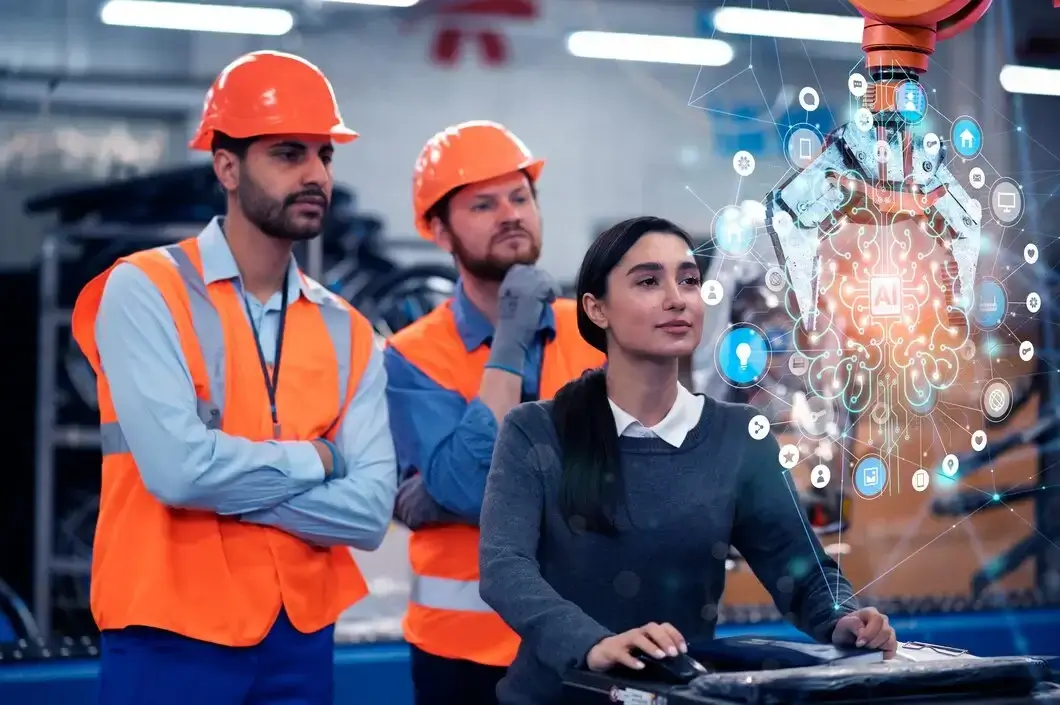Cracks in packaging, contamination in bottles, or foreign objects left unnoticed are not minor oversights. These issues can result in product recalls, regulatory actions, and long-term damage to brand credibility. Manual inspections, though valuable, often fail to detect subtle or inconsistent defects at production speed.
Scanflow’s AI visual inspection provides structured, real-time quality checks using camera-based systems that identify critical issues before products reach the end of the line.
The Problem with Manual Quality Checks
Production lines move fast, and human attention is limited. Even skilled quality teams face challenges when relying on visual judgment alone. Common issues include:
- Micro cracks in containers or seals that escape detection
- Contaminants blending with packaging or contents
- Poor fit or loose closures that go unnoticed
- Label or print errors that bypass manual spot checks
- Inconsistent performance due to operator fatigue
Spot checks are not sufficient. Each unit must be validated consistently.
What Scanflow Detects in Real Time
Contamination Inside Packaging
Foreign particles such as dust, fibers, or debris can enter during fill or cap stages. Scanflow scans packaging interiors to flag non-conforming units immediately.
Cracked or Incomplete Seals
Small fractures or incomplete sealing are captured by the system before packaging continues. This avoids rework and customer complaints.
Label Misplacement and Print Issues
Missing labels, misalignment, or incorrect batch codes are detected without slowing the line. This reduces downstream rejections and maintains compliance.
Foreign Object Detection
Objects introduced during production such as misplaced caps, tools, or materials are identified using AI visual models.
Assembly and Fitment Errors
Scanflow confirms that each product is properly assembled. This includes closure fit, cap placement, and box alignment during packaging.
Industries Impacted by These Defects
- FMCG: Bottles, containers, cosmetics, and packaging lines
- Pharmaceuticals: Blister packs, folding cartons, secondary packaging
- Beverage: Label accuracy, seal integrity, and fill-level uniformity
- Consumer Goods: Component checks and finished product assembly
Each of these industries requires high-throughput inspection systems that can detect variable defects early in the process.
How Scanflow Solves It
Scanflow’s inspection solution is built to operate across:
- In-line conveyor systems for live defect detection
- Static checkpoints for mid-process inspection
- End-of-line systems for final validation before shipping
It integrates with existing infrastructure using edge-based cameras or smart devices and uses trained visual models to validate packaging integrity, component presence, and visual conformity. All inspection data is logged and can be shared with enterprise systems for traceability.
Why Acting Early Matters
If a cracked seal or contaminant is missed during production, it may only be discovered after it reaches the customer. This leads to complaints, reputational risk, and possible product recalls. Scanflow addresses these risks by enabling real-time defect detection at the point of occurrence.
Final Note
Not every defect is easy to spot. And not every production environment can afford to rely on manual checks alone. When accuracy and consistency are essential, Scanflow provides the layer of inspection manufacturers need to maintain quality across every unit.
Talk to us about deploying AI visual inspection across your line.





